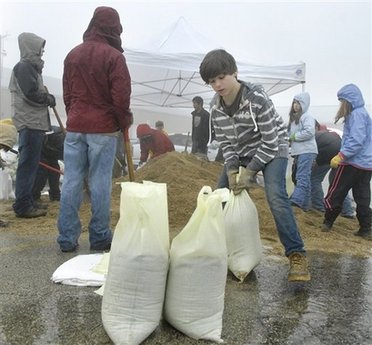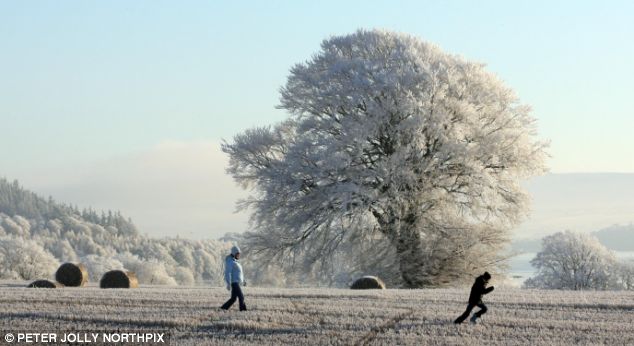
© AP Photo/The Daily Herald, Laura StoeckerAdam Koehl, 11, of Boy Scout Troop 56, moves a sandbag while he and other scouts from various troops help fill some 2,400 sandbags at the Campton Township Highway Department in Lily Lake, Ill., west of Chicago, for use by anyone trying to stem local flooding Saturday morning, Dec. 27, 2008.
Detroit - Wind gusting more than 60 mph knocked out power to about 370,000 Michigan homes and businesses on Sunday as temperatures dipped back into the 20s and 30s.
Meanwhile, flood warnings were posted throughout the Midwest as temperatures rose after a week of heavy snowfall. Forecasters said flooding was possible in areas of Wisconsin, Ohio, Iowa, Michigan and Indiana.
In Michigan, high wind knocked down tree limbs and power lines. Parts of the state also got about 4 inches of snow.
"We've had an intensifying storm system track northeast through the state," said Mark Sekelsky, a meteorologist with the National Weather Service in Grand Rapids. "As that storm intensified, it brought the winds."


Comment: The article ends with the usual lies to make this seem normal and consistent with the global warming hoax.
During the winter months in the northern hemisphere low pressure tends to dominate over Iceland and high pressure to the south, over the Azores. The two pressure systems work together fluctuating and generally are the forces responsible for the winter weather. This is known as the North Atlantic Oscillation (NAO). When the Icelandic low pressure system and Azores high pressure system are strong, they generate wet and mild weather over Europe. But when the NAO goes into a negative phase it drives the bitterly cold arctic air into the UK and Europe. The NAO is turning negative right now.
The image below shows the relationship of the Atlantic Oscillation (AO) and North Atlantic Oscillation (NAO) in both positive and negative cycles.
It appears that not only is the NAO going negative but possibly also the Atlantic Oscillation may follow closely behind. If the AO goes strongly negative a strengthening arctic blast will move down over North America within a week or two of Europe going into the deep freeze. If this does come about, January will see the entire northern hemisphere under arctic influences.